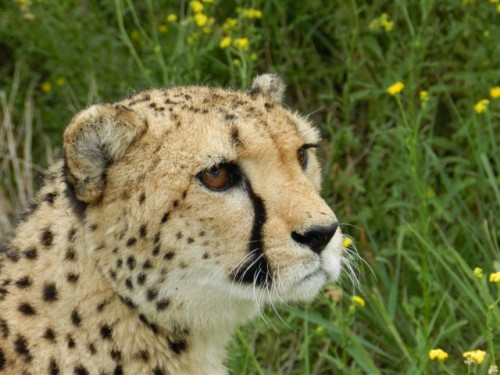19th January 2012 Windhoek, Namibia
Clever cheetah conservation in Namibia
I was fortunate to have the opportunity to visit the Cheetah Conservation Fund (CCF) Centre this weekend and was delighted to discover a number of British scientists and volunteers based at the field research, conservation and education centre near Otjiwarongo.

Namibia is home to the world’s largest number of free-ranging cheetah, boosting some 20% of the world’s wild population – at around 3,000 cheetahs. The existence of such numbers of the ‘fastest cat on earth’ is not without its problems – even in such a scantly populated country – as 90% of Namibia’s cheetahs live on livestock farmlands where they regularly come into conflict with humans.
I met British ecologist Niki Rust, who joined the CCF team in November and is busy conducting game counts, research projects and supervising international and Namibian student dissertations related to conservation and ecology issues in Namibia. She is planning to undertake a PhD in Namibia to determine the feasibility of creating a financial incentive scheme for farmers who manage livestock in a predator-friendly manner. A great example of British expertise at work on the ground here.
Other British scientists and volunteers included Keeper Assistant Rachel Shairp, student intern Suzie Kenny, Tourism Officer Emma Place and Ecologist Rob Thomson, who summed up their experience: “Namibia is a beautiful country and it’s people are a pleasure to work with. I genuinely love working alongside them and helping them to preserve their natural heritage.” 
As well as studying the cheetahs that are brought into the non-breeding research centre (usually injured), CCF works to develop strategies to encourage the sustainability of their habitat and prey species in its bid to support a viable wild cheetah population.
The CCF is running a number of fascinating conservation projects to integrate human needs with cheetah management and help smooth coexistence. It also teaches ‘predator-friendly’ farming practises.
A particularly ingenious initiative is its Livestock Guarding Dog programme based on introducing Anatolian Shepherd dogs to local farms to protect livestock against predators. The breed was used for thousands of years to protect sheep from wolves in Turkey. The dogs are trained to place themselves between stock and any threats, and bark loudly. The presence of such an intimidating guardian is often enough to make a predator leave without needing to kill it. CCF breeds, places and monitors the dogs, and investigate livestock losses to predators on farms with and without guarding dogs. Nearly 400 dogs have been placed on livestock farms since the programme was launched in 1994, and farmers have reported up to an 80% decrease in livestock losses.
I thoroughly recommend British and other visitors to Namibia to call into the centre, which has an impressive Education Centre and offers visitors the chance to see some of the 52 cheetahs currently being kept and cared for. The centre is open daily from 9am-5pm (except 25 Dec) and offers a range of visit packages: www.cheetah.org Do call in if you are visiting the Otjiwarongo area.
CCF also has a UK branch, which works to raise awareness of the endangered cheetahs’ plight and raise funds for the wide-ranging conservation and scientific work that CCF does in Namibia and internationally. See ww.cheetah.org.uk for further information.
My visit to CCF opened my eyes to the challenges facing this beautiful and unique species and its continued survival in Namibia. It was also great to learn that there are a number of Brits actively working here to help develop best practice in their conservation and management, which can be exported for the benefit of other cheetah populations in the world.
It’s great to see so many British people helping save the Cheetahs.
Its just a shame the British Government can’t be bothered to help !
I am very happy for the Cheetah Conservation Fund! This Centre of excellence must be helped and well known for the big efforts it makes not only to save the cheetah, but also for th whole cheetah countries in the world!
but what are the cheetah’s killing/eating instead? Is there enough of wild prey for these animals to survive?
love the introduction of the dogs. good work! inspiring!